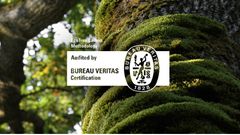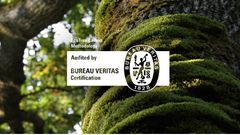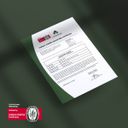
Buy high-quality carbon credits and contribute to creating natural carbon sinks.
When obtaining carbon credits through EcoTree, you automatically contribute to sustainable european forests and biodiversity restoration.
Discover our carbon credits for individuals
You can support forest carbon sinks by purchasing carbon credits. One carbon credit is equivalent to capturing one tonne of CO2 equivalent.




Didn't find what you were looking for? Please contact us.
Your carbon certificate is third-party verified and proves the credit’s environmental benefits.
Your carbon certificate is third-party verified and proves the credit’s environmental benefits.
Carbon credits from local projects.
We do not use intermediaries when issuing carbon credits. The credits are a direct result of our foresters' work creating, restoring and maintaining European forests, and are based on our verified carbon methodology.
Certified and the result of a rigorous methodology
We have developed a unique methodology for quantifying the CO2 captured by our forests, adapted to mixed-species forestry with a continuous forest cover. The purchase of a carbon credit provides you with a certificate verifying your contribution according to our method certified by Bureau Veritas.
Supporting the restoration of European ecosystems
Carbon credits are based on our holistic approach to mix-species forestry with continuous cover and ecosystem restoration.

What are high-quality carbon credits?
What are high-quality carbon credits?
The carbon credits we issue are from forestry projects meeting the criteria of uniqueness, additionality, permanence and measurability. They are the result of mixed-species forestry with a continuous forest cover, which avoids clear-cutting. All our forests are located in Europe, enabling you to capture part of your CO2 emissions as locally as possible.
Why buy carbon credits?
Why buy carbon credits?

FAQ
You're always welcome to contact us, if you have questions. However, we've answered some of the most frequently asked ones below.
What's the difference between buying trees and carbon credits?
When you buy trees, you become their owner and receive a certificate confirming your ownership. The trees grow in our European forests, managed by our foresters throughout their life cycle. When harvested, you receive the profit from the sustainable timber sale, By purchasing carbon credits, you support forest preservation for at least 100 years, ensuring multiple generations of trees sequester carbon. Each credit corresponds to one tonne of CO2 captured, verified by a carbon certificate. Both options help strengthen forest ecosystems and biodiversity. While carbon credits ensure long-term forest preservation, individual trees are not permanent (for more details, see our white paper dedicated to carbon).
How are the high-quality carbon credits priced?
The price of our high-quality carbon credits is determined by several factors: we consider the costs involved in creating and maintaining the project, such as planting the new forest, protecting the seedlings, and long-term maintenance. We then divide this by the number of tonnes of CO2 eq. sequestered as part of the project, minus the number of tonnes of CO2 eq. that would have been sequestered in a reference scenario, had the project not taken place. In effect, we are only counting the CO2 that has been captured as a result of the project, compared to the baseline scenario. The carbon credits available in our shop are all certified by Bureau Veritas, the world leader in certifications. Learn more about high-quality carbon credits right here.
Can I resell my certificate?
Carbon credits are intangible assets that are recorded in EcoTree’s carbon registry, are freely transferable and form part of the legal assets of the holder, who is free to use them as they see fit. However, if the certificates are used in sustainability accounting they are retired and can’t be resold. Read our blog article about carbon retirement here.
Is the purchase of carbon credits tax-deductible?
No, the purchase of carbon credits does not entitle you to a tax deduction. If you wish to support projects that are eligible for a tax deduction, you must finance sponsorship projects that are not carbon capture initiatives.
Will I receive regular updates on the project?
When buying carbon credits, you can subscribe to our newsletter for updates on our projects. Your carbon certificate is available in your EcoTree account, where you can also learn more about the forest your credit supports.
Are carbon credits included in extra-financial reporting?
Yes, if you're representing a company, we provide KPIs for your extra-financial report to help meet your CSRD obligations. Under ESRS E1 on climate change, the seventh disclosure (D7) addresses GHG absorptions and mitigation projects financed by carbon credits. Companies may need to report on actions outside their value chain, including the nature of their carbon credits (avoidance or sequestration), project location (EU or non-EU), and whether they’re part of Nature-based Solutions (NBS) or Technology-based Solutions. Our carbon credits come from European nature-based absorption projects. They can also be used in other voluntary reporting frameworks, such as CDP or SBTI. We can help you maximize the value of your commitments within these frameworks. Learn more about carbon credits for companies.